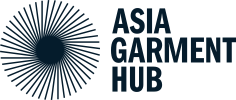Why GCFF advocates for a global, full value chain perspective to transitioning the fashion industry to a circular one
By Juliette Tafreschi, October 25, 2023
What actions need to be taken to achieve a long-term, scalable and equitable transition to a circular fashion industry? A conversation with Holly Syrett, Impact Programmes and Sustainability Director, GCFF.
Could you tell us more about the Global Circular Fashion Forum (GCFF) initiative and its mission? Who is behind this initiative?
To achieve a long-term, scalable, and just transition to a circular fashion industry, consorted global action with textile and garment manufacturing countries is urgently needed. Global Fashion Agenda (GFA) initiated the Global Circular Fashion Forum (GCFF) with initial funding from GIZ to spur global action and local action in textile and garment manufacturing countries to accelerate and scale recycling of textile waste, starting with post-industrial waste. This is part of a broader mid to long term circularity strategy for the fashion industry that can help prepare such regions for post-use recycling and work towards closing the loop for all currently wasted textiles.
What sets GCFF apart from existing initiatives in the field of circular fashion and post-industrial textile waste recycling?
The GCFF responds to global brands and retailers’ ambitions to significantly increase the use of recycled content in new textiles, reduce their scope three emissions and national apparel manufacturers’ ambitions to turn waste into value, futureproof their organisations and moreover deliver circular and low carbon solutions to their brand customers. The added value of the GCFF in combination with its National Circular Fashion Partnerships is that it advocates for a global, full value chain perspective to transitioning the fashion industry to a circular one, ensuring that manufacturers/manufacturing countries are actively part of (designing) a new system. In addition, it enables action on the ground while leveraging global brand demand, and it convenes stakeholders across various circularity programmes and regions to enable sharing of knowledge and experiences.
What are the key stakeholders that GCFF aims to mobilize to establish the necessary ecosystem for scaling post-industrial textile waste recycling programs in manufacturing countries?
The multi-stakeholder set-up in manufacturing countries convenes manufacturers, brands, governments, recyclers, NGOs, and other relevant stakeholders to identify an ambitious shared vision and roadmap with objectives for circular textiles in their country and seeks to drive commitments for implementation.
Could you provide some insights into the experiences of Global Fashion Agenda (GFA) with the National Circular Fashion Partnership (NCFP) in Bangladesh? How do these experiences inform the GCFF's approach?
The GCFF builds on GFA’s successful experiences with the first NCFP in Bangladesh, alongside project partner Reverse Resources, which has been ongoing since 2020. The NCFP Bangladesh demonstrated the industry’s appetite for sourcing and producing with recycled fibres. Outcomes from this first NCFP show that national and tangible global industry efforts help to scale recycling of post-industrial textile waste and eventually increase the availability of recycled materials, while reducing GHG emissions.
Learnings also stipulate the need to unite various actors in each country, as in Bangladesh for example, there are a plethora of different and somewhat unconnected circularity initiatives. Future NCFPs will include a multi-stakeholder set-up, focus on coordination of efforts and resources of locally relevant stakeholders, set nationally owned and driven targets and roadmaps, as well as monitor and continuously assess results, and where needed, adjust targets as the landscape keeps changing.
Could you provide an overview of what National Circular Fashion Partnerships (NCFPs) entail and how they contribute to the GCFF's mission of scaling post-industrial textile waste recycling programs in manufacturing countries?
National Circular Fashion Partnerships (NCFPs) aim to (1) set-up and facilitate national multi-stakeholder exchange and convener platforms, (2) establish effective national infrastructures for post-industrial textile waste recycling (specific approach differs per country) that bring value to all stakeholders, and (3) ensure barriers to scale are identified, addressed, and mitigated to ultimately reduce virgin resource use by increasing the availability of recycled materials across material types. The NCFP programmes facilitate multi-stakeholder efforts to establish and scale effective national infrastructures for post-industrial textile waste recycling, to reduce virgin resource use by increasing the availability of recycled materials.
How does GCFF plan to customize its approach to the local context of different countries, taking into account factors like waste streams, policy environments, and existing programs and infrastructure?
The multi-stakeholder set-up of the NCFPs convenes manufacturers, brands, governments, recyclers, NGOs, and other relevant stakeholders to identify an ambitious shared vision and roadmap with objectives for circular textiles in their country and seeks to drive commitments for implementation. In each country, a national facilitator will lead the NCFP, providing a strong, on the ground presence and sense of ownership, as well as credibility with the national government, and a good understanding of the country’s culture, habits and characteristics of the textile and garment sectors. In the locally-led development phase of each NCFP, factors that require customisation to the local context are carefully considered, such as the scale and nature of current waste streams, the policy environment, and the existing landscape in terms of recycling programmes and infrastructure.
What criteria are considered when selecting candidate countries for NCFPs, such as Bangladesh, Vietnam, Cambodia, Indonesia, Kenya, India, and Turkey? How do political climate, funding availability, and industry interest factor into the decision?
When selecting candidate countries for NCFPs, GCFF considers a wide range of criteria. These include the current availability of a strong local partner to lead the NCFP, the interest of brands, manufacturers, textile recyclers etc. to work on recycling topics, the current textile recycling infrastructure, the level of saturation of the circularity space, the political climate and relevant legislation, and potential risks of establishing an NCFP. GCFF engages with relevant stakeholders in the candidate countries to learn about the status of these criteria, and ultimately the GCFF Steering Committee is responsible for making selection decisions.
Looking ahead, what are the primary activities and milestones outlined in the GCFF's work plan, with a focus on the period from June 2022 to May 2024, as the initiative transitions from its initiation phase to the next stages of development and implementation?
Several exciting activities are planned for the period up to May 2024. First, as part of the objective to mobilise global brands and retailers to commit to the use of recycled materials, an industry-wide survey will be conducted, complementary to existing surveys. The goal is to identify recycled material demand and cross-reference it with the potential to deliver recycled materials in priority manufacturing countries such as Vietnam and Cambodia. A second activity, contributing to the objective to disseminate knowledge and best practices of circular fashion activities, is the development of a Scaling Circularity playbook, a blueprint for the replication of circular fashion systems across manufacturing countries. And thirdly, the NCFPs in Cambodia and Vietnam will be further developed. On 13 November, for example, GCFF and GIZ are organizing a webinar to outline the opportunities for an NCFP in Vietnam, delving deeper into the Vietnamese apparel and textile industry landscape. This event represents the first step in building a community of like-minded individuals and organisations dedicated to revolutionizing the industry.
Holly Syrett is the Impact Programmes & Sustainability Director at Global Fashion Agenda. Her responsibilities include contributing to the strategic mission and sustainability agenda, driving GFA’s impact programmes such as the Circular Fashion Partnership and ensuring strategic engagement with key stakeholders and partners. Holly Syrett joined Global Fashion Agenda as Senior Sustainability Manager in May 2020 to mobilise and guide the fashion industry to take bold action on sustainability by researching, project leading and writing new and existing GFA publications, commitments and reports such as the CEO Agenda. Syrett brings 10 years of experience working on sustainability and transparency programmes in the fashion industry for both public and professional audiences. Syrett is a World Economic Forum Global Shaper, Climate Reality Leader and she holds a BA in Fashion and Branding from the Amsterdam Fashion Institute. As part of the Global Shapers’ Community, she co-founded the Shaping Fashion movement that is now active in 50+ cities worldwide.
